
David Elstone

Jim Girvan
A recent article in the Business In Vancouver (BIV) makes serious allegations into the process used by the province’s Provincial Chief Forester to determine the allowable annual cut (AAC), claiming the “BC timber harvest is vastly overestimated.” The BIV article is based on a “leaked” consultants’ report prepared for a group of First Nations whose traditional territory overlaps with the Mackenzie Timber Supply Area (TSA). …It challenges the Chief Forester’s role in protecting the public interest with respect to sustainable forest management, reading more as an “I gotcha moment” which questions the Timber Supply Review (TSR) process that underpins the setting of AACs across the province.
…The workings of the TSR and AAC determination are not a “dirty secret” or a “black box” process, but rather, one that is routinely replicated by knowledgeable and qualified professionals. Using the inputs that are largely cited and noted, the modelled timber supply projections can be easily reproduced. …Looking at the Mackenzie TSR process in all three of its public reports, it would appear to be a well-documented, lengthy process that took into consideration input from many stakeholders including the collaborative technical working group formed between local First Nations and the BC government. The resultant AAC determination appears to be an informed judgment made by the Chief Forester that draws a balance between the social, environmental and economic objectives of the Crown.
…The consultants believe the full adoption of their assumptions, having a more conservative approach to manage for uncertainties should have been used. …We would suggest BIV’s editor look to produce more balanced editorial because it is difficult to take the BIV seriously considering the one-sided language used to make the case that there is something not right in BC forestry. …Aside from the sensationalism of the BIV article, whichever side you believe, there is a need to investigate these claims given the risk to erosion of the public’s confidence in the province’s sustainable management of its forests.

 US President Trump could decide next year to withdraw from the Canada-United States-Mexico trade agreement (CUSMA), Politico reported on Thursday, citing U.S. Trade Representative Jamieson Greer. “The president’s view is he only wants deals that are a good deal. The reason why we built a review period into CUSMA was in case we needed to revise it, review it or exit it,” Greer told Politico’s White House bureau chief Dasha Burns in a podcast episode that airs Friday. Greer also raised the idea of negotiating separately with Canada and Mexico and dividing the agreement into two parts in the podcast, adding that he spoke with Trump about that possibility just this week. …Trump on Wednesday said that the CUSMA agreement – which faces an upcoming review- will either be left to expire or another deal will be worked out.
US President Trump could decide next year to withdraw from the Canada-United States-Mexico trade agreement (CUSMA), Politico reported on Thursday, citing U.S. Trade Representative Jamieson Greer. “The president’s view is he only wants deals that are a good deal. The reason why we built a review period into CUSMA was in case we needed to revise it, review it or exit it,” Greer told Politico’s White House bureau chief Dasha Burns in a podcast episode that airs Friday. Greer also raised the idea of negotiating separately with Canada and Mexico and dividing the agreement into two parts in the podcast, adding that he spoke with Trump about that possibility just this week. …Trump on Wednesday said that the CUSMA agreement – which faces an upcoming review- will either be left to expire or another deal will be worked out. 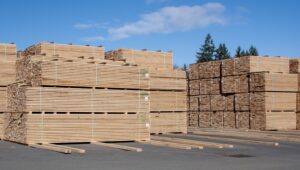 The federal government has rejected an industry request for payouts to softwood producers in Canada on the hook for US duties, fearing that direct intervention would further irritate the US. Canadian softwood producers have paid more than $10-billion since 2017 in accumulated duties, which are cash deposits held in trust by the US that collect interest. The producers expect the US to refund a portion of the duties if and when the two countries resolve the trade dispute. In the meantime, the industry has suggested that the Canadian government make payouts to reflect the present value of anticipated refunds. The two sources said Ottawa would have received any future refunds in exchange for injecting much-needed liquidity into the struggling industry. Ottawa rejected the idea because of fears that such payouts would be viewed as subsidies and become a serious irritant during the wider US trade war, according to a senior government official. [to access the full story a Globe & Mail subscription is required]
The federal government has rejected an industry request for payouts to softwood producers in Canada on the hook for US duties, fearing that direct intervention would further irritate the US. Canadian softwood producers have paid more than $10-billion since 2017 in accumulated duties, which are cash deposits held in trust by the US that collect interest. The producers expect the US to refund a portion of the duties if and when the two countries resolve the trade dispute. In the meantime, the industry has suggested that the Canadian government make payouts to reflect the present value of anticipated refunds. The two sources said Ottawa would have received any future refunds in exchange for injecting much-needed liquidity into the struggling industry. Ottawa rejected the idea because of fears that such payouts would be viewed as subsidies and become a serious irritant during the wider US trade war, according to a senior government official. [to access the full story a Globe & Mail subscription is required]
 When Domtar announced it would be shuttering a Vancouver Island pulp mill and laying off 350 workers, it came as little surprise to those who knew the company was losing millions of dollars despite cost-cutting measures by management and staff. What’s not widely known is that the company had been buying and transporting American pulp to the Cowichan Valley facility to keep it running after struggling to find enough material in Canada. “It’s cheaper and it’s more readily available and dependable, in terms of its supply,” said Domtar’s senior director of public affairs, Chris Stoicheff. “That should give an indication to British Columbians of where we’re at.” …The forestry sector has been urging the government to reform permitting and approvals processes and reduce red tape in order to make them more economically viable. Stoicheff says the opposite has been true, with companies going from weeks-long waits for harvesting permits to year-long waits.
When Domtar announced it would be shuttering a Vancouver Island pulp mill and laying off 350 workers, it came as little surprise to those who knew the company was losing millions of dollars despite cost-cutting measures by management and staff. What’s not widely known is that the company had been buying and transporting American pulp to the Cowichan Valley facility to keep it running after struggling to find enough material in Canada. “It’s cheaper and it’s more readily available and dependable, in terms of its supply,” said Domtar’s senior director of public affairs, Chris Stoicheff. “That should give an indication to British Columbians of where we’re at.” …The forestry sector has been urging the government to reform permitting and approvals processes and reduce red tape in order to make them more economically viable. Stoicheff says the opposite has been true, with companies going from weeks-long waits for harvesting permits to year-long waits.

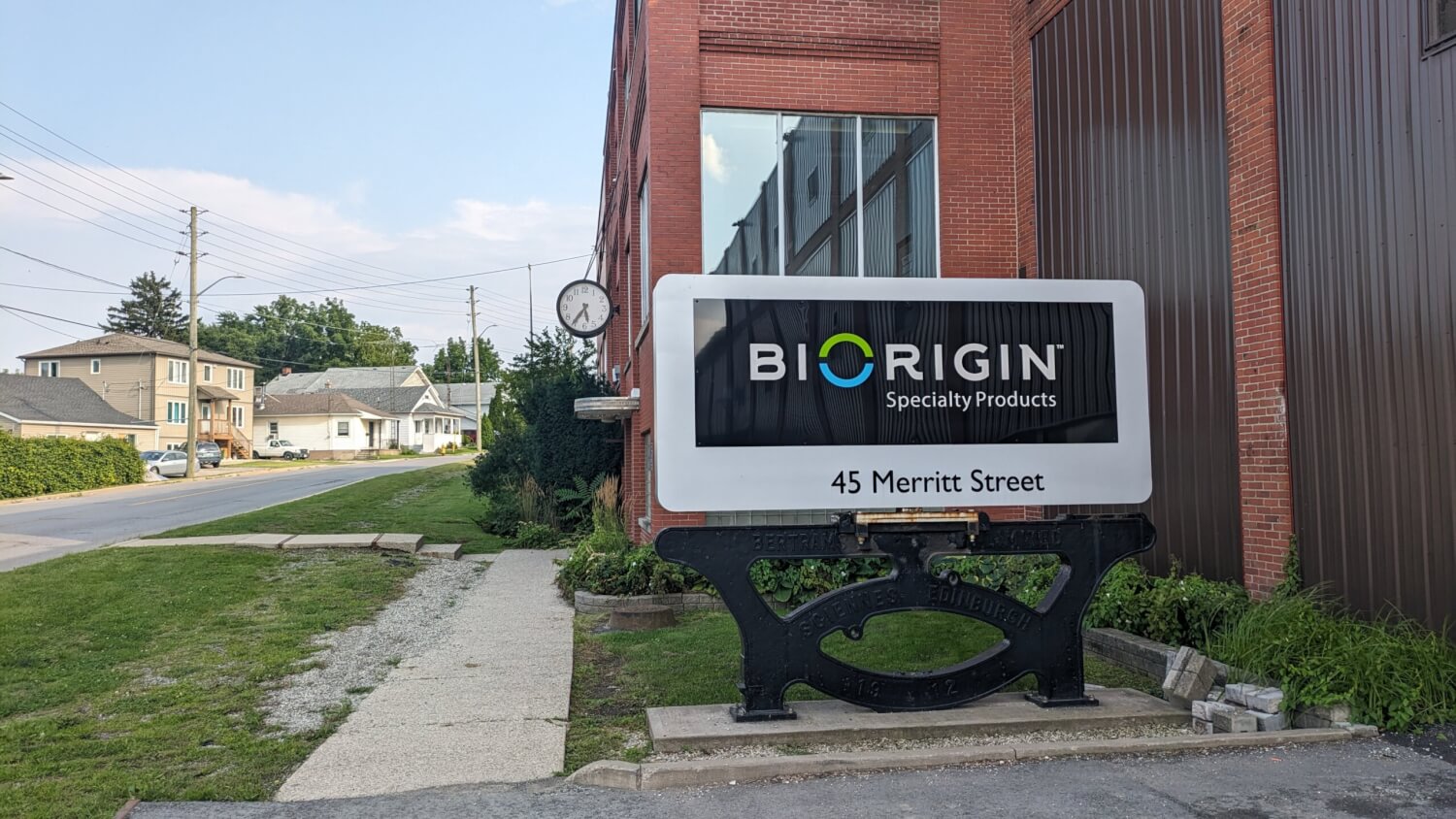

 MANCHESTER, Tennessee – Several US sawmills are struggling to stay open after industry leaders said years of trade uncertainty have drained export markets and tightened margins. The Hardwood Federation estimates at least one sawmill is going out of business every week. Additionally, the National Hardwood Lumber Association (NHLA) reported that more than 4% of U.S. sawmills have been lost due to closures and consolidations. The equipment from those sawmills ends up in a growing pile of auction fliers on Johnny Evans’ desk at the Evans Lumber in Manchester, Tennessee. However, Evans is desperate to save his sawmill from being auctioned off due to ongoing trade talks. …Evans said a lot of this goes back to trade tensions that began in 2018, during the first Trump administration. That’s when some countries, like China, stopped buying American hardwood in retaliation to President Donald Trump’s tariff policies.
MANCHESTER, Tennessee – Several US sawmills are struggling to stay open after industry leaders said years of trade uncertainty have drained export markets and tightened margins. The Hardwood Federation estimates at least one sawmill is going out of business every week. Additionally, the National Hardwood Lumber Association (NHLA) reported that more than 4% of U.S. sawmills have been lost due to closures and consolidations. The equipment from those sawmills ends up in a growing pile of auction fliers on Johnny Evans’ desk at the Evans Lumber in Manchester, Tennessee. However, Evans is desperate to save his sawmill from being auctioned off due to ongoing trade talks. …Evans said a lot of this goes back to trade tensions that began in 2018, during the first Trump administration. That’s when some countries, like China, stopped buying American hardwood in retaliation to President Donald Trump’s tariff policies.
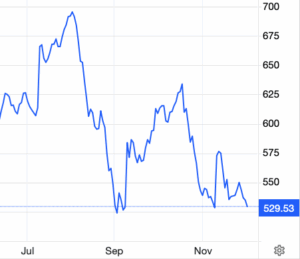 Lumber futures fell toward $530 per thousand board feet, down nearly 10% from November’s peak, as the market contends with pronounced oversupply and lingering weak demand. Mills and distributors continue to carry elevated inventories, a hangover from early 2025 when buyers front-loaded purchases in anticipation of tariffs, leaving the market with a persistent supply overhang. At the same time, US housing starts and building permits remain below last year’s levels, reflecting a prolonged construction slowdown as easing borrowing costs have yet to materialize in higher new building activity and limit near-term consumption of framing lumber. Demand from renovation and new homebuilding also remains subdued, with housing-related wood products consumption estimated to have declined in 2024 and only a modest recovery expected in 2025.
Lumber futures fell toward $530 per thousand board feet, down nearly 10% from November’s peak, as the market contends with pronounced oversupply and lingering weak demand. Mills and distributors continue to carry elevated inventories, a hangover from early 2025 when buyers front-loaded purchases in anticipation of tariffs, leaving the market with a persistent supply overhang. At the same time, US housing starts and building permits remain below last year’s levels, reflecting a prolonged construction slowdown as easing borrowing costs have yet to materialize in higher new building activity and limit near-term consumption of framing lumber. Demand from renovation and new homebuilding also remains subdued, with housing-related wood products consumption estimated to have declined in 2024 and only a modest recovery expected in 2025. 
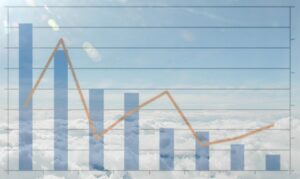 Prime Minister Carney announced measures to help protect and strengthen the sectors most affected by U.S. tariffs. …The focus of the liquidity initiatives are to reduce bankruptcy or closure risk for leveraged or high-cost lumber mills through initiatives such as the BDC Softwood Lumber Guarantee Program… and enhancing EI worksharing and training grants. The demand support initiatives include working with railway companies to cut freight rates, prioritizing shovel-ready, multiyear projects that use Canadian wood products and creating demand for Canadian Wood products. The structural initiatives include a “forestry concierge” at Natural Resources Canada to help mills navigate loans and programs as well as an industry-led transformation task force to expand, diversify and identify opportunities and support affected communities. …The measures will help the sector but the bigger picture is really about duties and a supply/demand balance that has traditionally been difficult to obtain given this industry’s capital intensity. [to access the full story a Globe & Mail subscription is required]
Prime Minister Carney announced measures to help protect and strengthen the sectors most affected by U.S. tariffs. …The focus of the liquidity initiatives are to reduce bankruptcy or closure risk for leveraged or high-cost lumber mills through initiatives such as the BDC Softwood Lumber Guarantee Program… and enhancing EI worksharing and training grants. The demand support initiatives include working with railway companies to cut freight rates, prioritizing shovel-ready, multiyear projects that use Canadian wood products and creating demand for Canadian Wood products. The structural initiatives include a “forestry concierge” at Natural Resources Canada to help mills navigate loans and programs as well as an industry-led transformation task force to expand, diversify and identify opportunities and support affected communities. …The measures will help the sector but the bigger picture is really about duties and a supply/demand balance that has traditionally been difficult to obtain given this industry’s capital intensity. [to access the full story a Globe & Mail subscription is required]
 The latest Global Wood Trends report – Softwood Lumber – Tariffs, Turbulence and New Trade Flows to 2030 – says from 2000 to 2024, European lumber output grew slowly at 0.4% per year but still outpaced domestic demand growth. This allowed Europe to expand exports overseas, a trend likely to continue as Russian and Canadian shipments remain constrained. …Production has expanded faster than demand, with exports rising from 10% of output in 2009 to 19% in 2024. Growth has been concentrated in Northern and Central Europe — led by Sweden, Finland, Germany, and Austria — where harvest levels are now close to structural limits. …Global Wood Trends concluded that Europe’s lumber market is entering a period of tightening supply and gradually recovering demand. While production growth is expected to shift toward Northern and Eastern Europe, overall expansion will be limited by structural harvest constraints in Central Europe. Stronger domestic consumption, combined with potentially higher US demand will likely support higher prices for logs and lumber.
The latest Global Wood Trends report – Softwood Lumber – Tariffs, Turbulence and New Trade Flows to 2030 – says from 2000 to 2024, European lumber output grew slowly at 0.4% per year but still outpaced domestic demand growth. This allowed Europe to expand exports overseas, a trend likely to continue as Russian and Canadian shipments remain constrained. …Production has expanded faster than demand, with exports rising from 10% of output in 2009 to 19% in 2024. Growth has been concentrated in Northern and Central Europe — led by Sweden, Finland, Germany, and Austria — where harvest levels are now close to structural limits. …Global Wood Trends concluded that Europe’s lumber market is entering a period of tightening supply and gradually recovering demand. While production growth is expected to shift toward Northern and Eastern Europe, overall expansion will be limited by structural harvest constraints in Central Europe. Stronger domestic consumption, combined with potentially higher US demand will likely support higher prices for logs and lumber.  Sweden’s Green Business Index declined in the fourth quarter of 2025 as forestry and crop farming weakened, according to data from the Federation of Swedish Farmers. The total index fell to 100.7 from 106.5 in the previous quarter, marking a broad slowdown across several agricultural industries. The forestry subindex recorded the largest fall, dropping by 19 points to 97.6, its lowest level since spring 2020. The decline reflects weaker export demand, lower prices for sawn wood and pulp, and a soft U.S. dollar that reduced export revenues. New tariffs on Swedish wood products to the United States and a slower global economy further limited profitability. LRF reports that sawmills and pulp producers have experienced tightening margins, while forest owners face lower returns and are reducing harvesting activity.
Sweden’s Green Business Index declined in the fourth quarter of 2025 as forestry and crop farming weakened, according to data from the Federation of Swedish Farmers. The total index fell to 100.7 from 106.5 in the previous quarter, marking a broad slowdown across several agricultural industries. The forestry subindex recorded the largest fall, dropping by 19 points to 97.6, its lowest level since spring 2020. The decline reflects weaker export demand, lower prices for sawn wood and pulp, and a soft U.S. dollar that reduced export revenues. New tariffs on Swedish wood products to the United States and a slower global economy further limited profitability. LRF reports that sawmills and pulp producers have experienced tightening margins, while forest owners face lower returns and are reducing harvesting activity. 
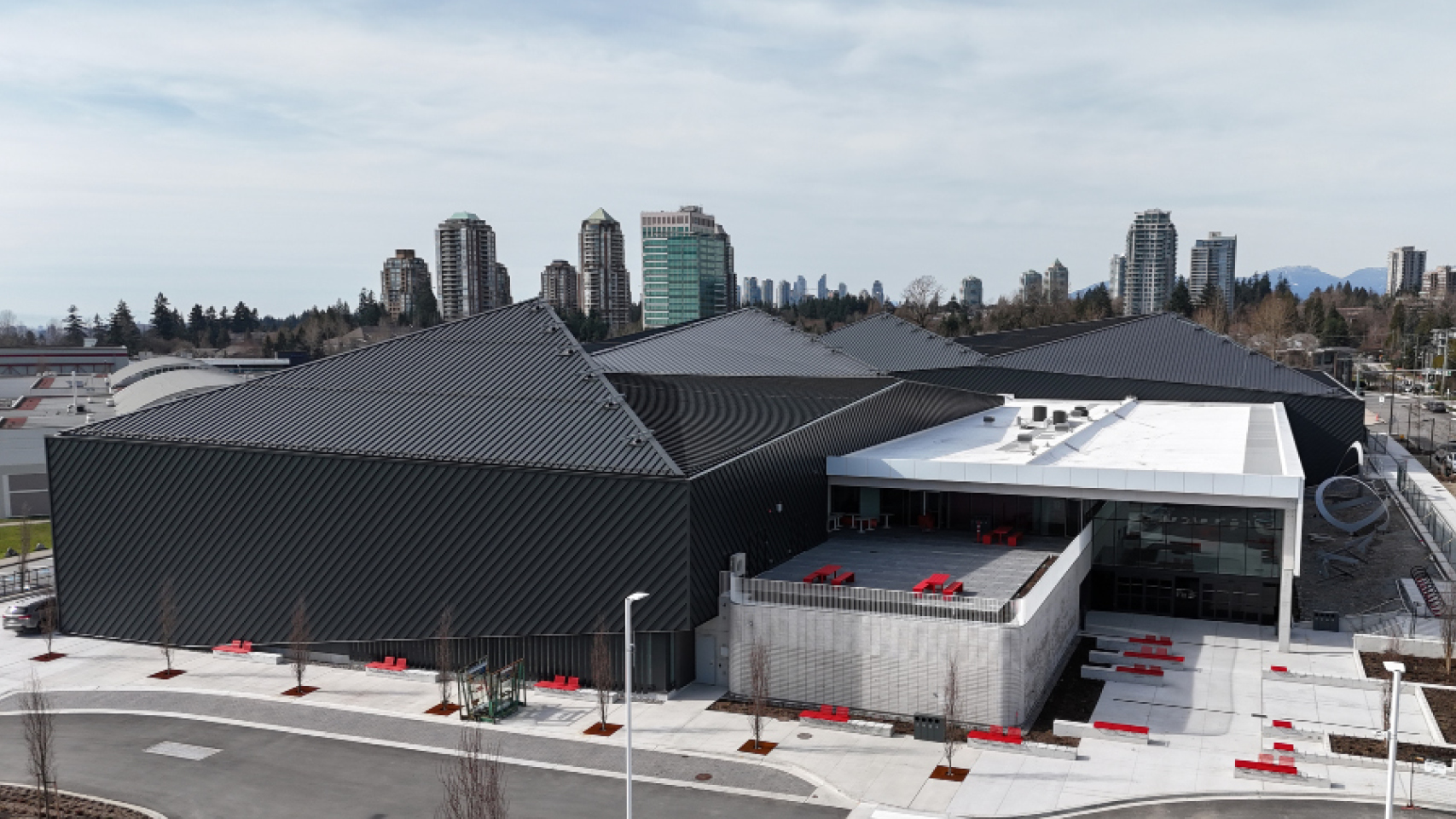


 A BC Resource Sector Coalition says current federal and provincial policymaking has become unpredictable enough to justify an immediate pause on all implementation and action under Declaration on the Rights of Indigenous Peoples Act (DRIPA). …“We write to you on behalf of thousands of British Columbians whose livelihoods, communities, and futures are tied to the natural resource sector. Today, those livelihoods are at risk,” the letter begins. “A series of federal and provincial policy decisions have destabilized the industries that sustain our province and are eroding the economic foundations of British Columbia.” …The coalition is composed of a cross-industry membership spanning land and marine activity: BCCA, Geoduck Underwater Harvesters Association, ICBA, Deep Sea Trawlers Association of BC, Guide Outfitters Association of British Columbia, Pacific Prawn Fishermen’s Association, North West Loggers Association, and the Council of Marine Carriers.
A BC Resource Sector Coalition says current federal and provincial policymaking has become unpredictable enough to justify an immediate pause on all implementation and action under Declaration on the Rights of Indigenous Peoples Act (DRIPA). …“We write to you on behalf of thousands of British Columbians whose livelihoods, communities, and futures are tied to the natural resource sector. Today, those livelihoods are at risk,” the letter begins. “A series of federal and provincial policy decisions have destabilized the industries that sustain our province and are eroding the economic foundations of British Columbia.” …The coalition is composed of a cross-industry membership spanning land and marine activity: BCCA, Geoduck Underwater Harvesters Association, ICBA, Deep Sea Trawlers Association of BC, Guide Outfitters Association of British Columbia, Pacific Prawn Fishermen’s Association, North West Loggers Association, and the Council of Marine Carriers.

 Prince George residents had better pay attention to last week’s report showing that unelected bureaucrats in Victoria are playing politics when they decide how much can be logged up here. I’ve been informed that our unelected Office of the Chief Forester, currently led by Shane Berg, is figuring out the Annual Allowable Cut (AAC) in the Prince George Timber Supply Area for the next 10 years. The process, known as a Timber Supply Review (TSR), masquerades as scientific and expert-driven, but in reality it’s politics. The amount we log is largely pre-determined and the game is how to manipulate the models and forests to achieve it. That’s why we get glyphosate with our blueberries and fertilizer-poisoned cattle. It’s why we don’t thin the plantations or do more selective logging. …The Office of Chief Forester prioritizes the “timber supply” over diverse, fire-resistant forests, as if the two are mutually exclusive.
Prince George residents had better pay attention to last week’s report showing that unelected bureaucrats in Victoria are playing politics when they decide how much can be logged up here. I’ve been informed that our unelected Office of the Chief Forester, currently led by Shane Berg, is figuring out the Annual Allowable Cut (AAC) in the Prince George Timber Supply Area for the next 10 years. The process, known as a Timber Supply Review (TSR), masquerades as scientific and expert-driven, but in reality it’s politics. The amount we log is largely pre-determined and the game is how to manipulate the models and forests to achieve it. That’s why we get glyphosate with our blueberries and fertilizer-poisoned cattle. It’s why we don’t thin the plantations or do more selective logging. …The Office of Chief Forester prioritizes the “timber supply” over diverse, fire-resistant forests, as if the two are mutually exclusive. Retired federal wildlife surveyor Erich Reeder… has seen centuries-old forests targeted for destruction as President Donald Trump’s administration accelerates logging on federal lands nationwide. Earlier this year, loggers cleared out most of the forest in Galagher Canyon, part of a federal timber sale an hour south of Eugene, Oregon. …“The Trump administration is ordering the last of our publicly-owned mature and old-growth forests to be cut off and sold,” Reeder, 59, said. …Legal and political battles are heating up between Trump, who is eager to bolster the timber industry as part of his effort to create thousands of jobs and reduce the risk of wildfire, and environmentalists who are keen to protect ancient forests and the endangered wildlife that depend on them. …At least 27 court battles over federal logging and endangered species are unfolding from California to Washington, DC. Seven cases are challenging logging in eastern states.
Retired federal wildlife surveyor Erich Reeder… has seen centuries-old forests targeted for destruction as President Donald Trump’s administration accelerates logging on federal lands nationwide. Earlier this year, loggers cleared out most of the forest in Galagher Canyon, part of a federal timber sale an hour south of Eugene, Oregon. …“The Trump administration is ordering the last of our publicly-owned mature and old-growth forests to be cut off and sold,” Reeder, 59, said. …Legal and political battles are heating up between Trump, who is eager to bolster the timber industry as part of his effort to create thousands of jobs and reduce the risk of wildfire, and environmentalists who are keen to protect ancient forests and the endangered wildlife that depend on them. …At least 27 court battles over federal logging and endangered species are unfolding from California to Washington, DC. Seven cases are challenging logging in eastern states. The Washington Forest Protection Association (WFPA) announced last week that it would file litigation against Washington state. The lawsuit will challenge a new buffer rule by the Washington State Forest Practices Board. The new rule expands the required no-cut buffers around non-fish-bearing streams in the state, requiring forestland owners to leave more trees uncut. WFPA states that it believes the new rule is a result of the Washington state Department of Ecology “misinterpreting” a federal water temperature standard. The statement added that the financial cost of implementing the rule is so large that it “justifies a judicial review.” The group also painted the creation of the new rule as a break from the state’s tradition of collaboration with other stakeholders. …“The rule overreaches the law, ignores on-the-ground realities, adds costly and unnecessary regulations, and offers little to no benefit for salmon recovery.”
The Washington Forest Protection Association (WFPA) announced last week that it would file litigation against Washington state. The lawsuit will challenge a new buffer rule by the Washington State Forest Practices Board. The new rule expands the required no-cut buffers around non-fish-bearing streams in the state, requiring forestland owners to leave more trees uncut. WFPA states that it believes the new rule is a result of the Washington state Department of Ecology “misinterpreting” a federal water temperature standard. The statement added that the financial cost of implementing the rule is so large that it “justifies a judicial review.” The group also painted the creation of the new rule as a break from the state’s tradition of collaboration with other stakeholders. …“The rule overreaches the law, ignores on-the-ground realities, adds costly and unnecessary regulations, and offers little to no benefit for salmon recovery.” TROY, Montana — Vincent Logging, a family-owned logging company in Libby is working with Hecla Mining Company to manage its forested lands for wildlife habitat. It’s a 15-hundred acre research project to determine which management techniques provide the best habitat for endangered species. …It’s forest land in the Bull Lake area on Hecla Mining property near Troy. “We’re going to create grizzly bear habitat or enhance existing habitat for the bear,” he said. “Doing so, will enhance habitat for all the other critters that are living in here or that might live in here. We’re also studying it for success or failure at the same time.” Chas said thinning small diameter trees opens the area to create more plants that grizzlies like to eat. Larger diameter trees and thickets are left untouched to create a safe haven for the bears.
TROY, Montana — Vincent Logging, a family-owned logging company in Libby is working with Hecla Mining Company to manage its forested lands for wildlife habitat. It’s a 15-hundred acre research project to determine which management techniques provide the best habitat for endangered species. …It’s forest land in the Bull Lake area on Hecla Mining property near Troy. “We’re going to create grizzly bear habitat or enhance existing habitat for the bear,” he said. “Doing so, will enhance habitat for all the other critters that are living in here or that might live in here. We’re also studying it for success or failure at the same time.” Chas said thinning small diameter trees opens the area to create more plants that grizzlies like to eat. Larger diameter trees and thickets are left untouched to create a safe haven for the bears. As the US Forest Service considers the future management of the Tongass National Forest, I hope that Alaska’s congressional delegation will listen to what Southeast Alaskans already know: Wild salmon are one of the Tongass’ most valuable resources. If we leave the trees standing and protect the habitat that fish need, the Tongass will continue to generate billions of dollars in natural dividends, in turn supporting thousands of fishing jobs and providing millions of pounds of nutritious seafood year after year. …For decades, Southeast Alaska’s communities and fishermen have fought industrial logging in the Tongass. …The harmful impacts of industrial logging on Southeast Alaska’s salmon watersheds and our natural dividends are not hypothetical. Protecting the Tongass is the most cost-effective way to improve ecosystem productivity and ensure the well-being for all who call Southeast home.
As the US Forest Service considers the future management of the Tongass National Forest, I hope that Alaska’s congressional delegation will listen to what Southeast Alaskans already know: Wild salmon are one of the Tongass’ most valuable resources. If we leave the trees standing and protect the habitat that fish need, the Tongass will continue to generate billions of dollars in natural dividends, in turn supporting thousands of fishing jobs and providing millions of pounds of nutritious seafood year after year. …For decades, Southeast Alaska’s communities and fishermen have fought industrial logging in the Tongass. …The harmful impacts of industrial logging on Southeast Alaska’s salmon watersheds and our natural dividends are not hypothetical. Protecting the Tongass is the most cost-effective way to improve ecosystem productivity and ensure the well-being for all who call Southeast home. 
 As the American West warms due to climate change, wildfires are increasingly burning in higher-elevation mountains, charring the watersheds where the region’s vital snowpack accumulates. A new study has found that in the immediate aftermath of fires across the region, the snowpack disappears earlier in burned areas. This change can threaten forest health and affect the downstream farms, cities and species that rely on the snowpack for their water, according to other research. Scientists who study the effects of wildfires on the snowpack and streamflows are finding that the story is complex and nuanced. The impacts can vary greatly across the West’s diverse ecosystems and topography. Plus, each wildfire burns differently, so the severity of the blaze is another critical factor. …Published in the Sept. 17 issue of
As the American West warms due to climate change, wildfires are increasingly burning in higher-elevation mountains, charring the watersheds where the region’s vital snowpack accumulates. A new study has found that in the immediate aftermath of fires across the region, the snowpack disappears earlier in burned areas. This change can threaten forest health and affect the downstream farms, cities and species that rely on the snowpack for their water, according to other research. Scientists who study the effects of wildfires on the snowpack and streamflows are finding that the story is complex and nuanced. The impacts can vary greatly across the West’s diverse ecosystems and topography. Plus, each wildfire burns differently, so the severity of the blaze is another critical factor. …Published in the Sept. 17 issue of  TORONTO — Environmental experts are calling out the City of Toronto for not including a what they say is a key climate tool in its five-year climate action plan. The Toronto Environmental Alliance is highlighting the lack of building emission performance standards (BEPS) in the plan. BEPS are regulations that set emission limits for new and existing buildings. How-Sen Chong, TEA’s climate campaigner, such standards are one of the most significant policy tools as they would help the city cut emissions more efficiently. …Bryan Purcell, at the Atmospheric Fund, said, “Buildings are the largest source of GHG emissions in Toronto, accounting for over half of the emissions,” he said. “Reducing emissions from buildings is absolutely key to reaching the city’s climate targets.” …Chong “we’re hoping city council recognizes how important this is because so much of the city’s emissions are coming from the building sector,” he said.
TORONTO — Environmental experts are calling out the City of Toronto for not including a what they say is a key climate tool in its five-year climate action plan. The Toronto Environmental Alliance is highlighting the lack of building emission performance standards (BEPS) in the plan. BEPS are regulations that set emission limits for new and existing buildings. How-Sen Chong, TEA’s climate campaigner, such standards are one of the most significant policy tools as they would help the city cut emissions more efficiently. …Bryan Purcell, at the Atmospheric Fund, said, “Buildings are the largest source of GHG emissions in Toronto, accounting for over half of the emissions,” he said. “Reducing emissions from buildings is absolutely key to reaching the city’s climate targets.” …Chong “we’re hoping city council recognizes how important this is because so much of the city’s emissions are coming from the building sector,” he said. As he officially opened COP30, Brazil’s president, Lula Inacio da Silva said “the world will finally be able to say that it truly knows the reality of the Amazon”. …Last year the biggest cause of forest loss in the Amazon was fires, which were ignited to clear land for agricultural expansion or illegal mining. Despite a pledge made at COP26 in Glasgow in 2021 to halt and reverse deforestation by 2030, another 8.1 million hectares of forest were lost globally last year. Lula called for a consensus on a roadmap to deliver on the Glasgow deforestation promise. …But while more than 90 countries supported a deforestation roadmap, opposition from the likes of Saudi Arabia, Russia and India meant deforestation failed to make it to the final agreement, and COP president Andre Correa do Lago said Brazil would continue to work on developing one over the next year, to present at COP 31 in Turkey.
As he officially opened COP30, Brazil’s president, Lula Inacio da Silva said “the world will finally be able to say that it truly knows the reality of the Amazon”. …Last year the biggest cause of forest loss in the Amazon was fires, which were ignited to clear land for agricultural expansion or illegal mining. Despite a pledge made at COP26 in Glasgow in 2021 to halt and reverse deforestation by 2030, another 8.1 million hectares of forest were lost globally last year. Lula called for a consensus on a roadmap to deliver on the Glasgow deforestation promise. …But while more than 90 countries supported a deforestation roadmap, opposition from the likes of Saudi Arabia, Russia and India meant deforestation failed to make it to the final agreement, and COP president Andre Correa do Lago said Brazil would continue to work on developing one over the next year, to present at COP 31 in Turkey.